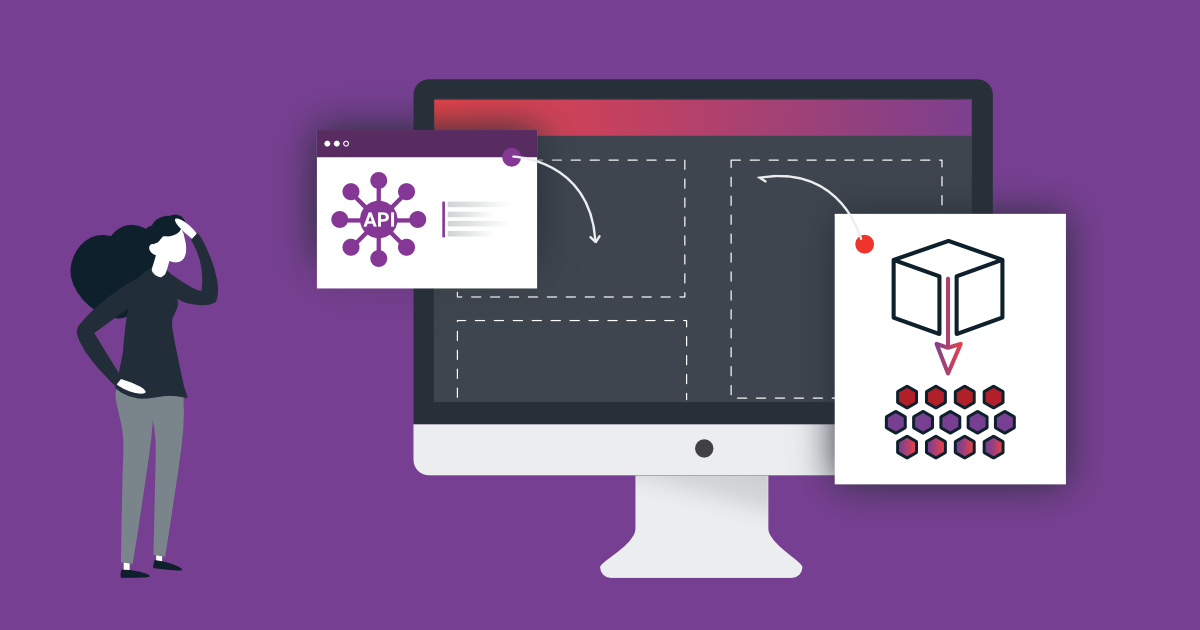Microservices architecture has emerged as a popular solution for building complex and scalable applications. In a microservices architecture, an application is broken down into a collection of loosely coupled, independently deployable services that communicate with each other via APIs. This approach offers many benefits, including improved scalability, reliability, and flexibility.
However, managing the APIs in a microservices architecture can be challenging, especially as the number of services grows. This is where API versioning comes in. API versioning is the practice of creating multiple versions of an API to support different clients and use cases. It helps ensure that changes to an API don't break existing clients and provides a way to evolve the API over time.
In this post, we'll explore the importance of API versioning in microservices architecture and provide best practices for implementing it effectively. We'll also cover several related topics, including API documentation using OpenAPI or Swagger, API gateways, API client development, API security, and API performance optimization. By the end of this post, you'll have a solid understanding of how to manage APIs in a microservices architecture and ensure seamless integration across all components of your system.
API Versioning and API Documentation
API versioning is the practice of creating multiple versions of an API to support different clients and use cases. In a microservices architecture, where multiple services communicate with each other via APIs, API versioning is essential to ensure seamless integration and avoid breaking changes that can affect the entire system.
The purpose of API versioning in a microservices architecture is to provide a way to evolve the API over time without breaking existing clients. As new services are added or existing services are modified, the API may need to change to accommodate these changes. Without versioning, these changes could potentially break existing clients, leading to downtime or other issues.
By creating multiple versions of an API, developers can make changes to the API while ensuring that existing clients can continue to use the previous version. This provides flexibility for both developers and clients, allowing for the API to be updated over time without disrupting existing functionality.
The importance of API documentation in maintaining backwards compatibility and enabling updates:
API documentation is critical for maintaining backwards compatibility and enabling updates in a microservices architecture. When changes are made to an API, whether it's a new version or an update to an existing one, it's important to provide clear documentation to ensure that developers and clients understand the changes and how to use the API.
Without proper documentation, developers may not be able to implement the changes correctly, leading to errors, downtime, or other issues. Clients may also be unable to use the updated API, causing frustration and potentially driving them away from the service.
Good API documentation should include a clear explanation of the API's functionality, including input and output parameters, error handling, and other relevant details. It should also provide examples of how to use the API in various contexts, as well as any specific instructions for upgrading to a new version.
By providing clear and comprehensive documentation, developers and clients can understand how the API works, how to integrate it into their systems, and how to update to new versions without disrupting existing functionality. This helps ensure that the API can evolve over time to meet changing needs while maintaining backwards compatibility and enabling updates.
API Versioning and API Gateways
What an API gateway is and how it can help with API versioning in a microservices architecture:
An API gateway is a layer that sits between clients and microservices in a microservices architecture. It serves as a single entry point for all API requests, and is responsible for routing requests to the appropriate microservices, as well as handling authentication, rate limiting, and other cross-cutting concerns.
In the context of API versioning, an API gateway can play an important role in managing the differences between different versions of APIs. When a new version of an API is introduced, the API gateway can route requests to the appropriate version based on the version number or other criteria. This allows different versions of an API to coexist without causing conflicts or breaking clients that are using older versions.
Here are some ways an API gateway can help with API versioning:
- Routing: An API gateway can use the version number in the URL or headers to route requests to the appropriate version of an API.
- Transformation: An API gateway can transform requests and responses between different versions of an API, to ensure compatibility with clients.
- Backward compatibility: An API gateway can maintain backward compatibility by mapping requests from older versions of an API to newer versions, or by translating responses from newer versions to older versions.
- Rollback: An API gateway can roll back to a previous version of an API if a newer version causes issues or conflicts with clients.
The benefits of using an API gateway, such as increased security, scalability, and flexibility:
Using an API gateway in a microservices architecture can provide several benefits, including increased security, scalability, and flexibility. By serving as a single entry point for all API requests, an API gateway can centralize security measures, such as authentication and rate limiting, making it easier to ensure consistent security across all microservices. It can also provide a layer of protection against attacks, such as distributed denial of service (DDoS) attacks, by buffering and filtering incoming requests before forwarding them to the microservices.
Additionally, an API gateway can improve scalability by allowing developers to add or remove microservices as needed, without having to change the client-facing API. This can help reduce the complexity of the overall system and enable faster iteration and deployment.
Furthermore, an API gateway can enhance the flexibility of the system by enabling developers to implement changes and updates to the API without requiring clients to update their code. For example, an API gateway can route requests to different versions of an API based on version numbers or other criteria, allowing multiple versions of an API to coexist and enabling backward compatibility.
Using an API gateway in a microservices architecture can help simplify the management of APIs, increase security, enhance scalability, and improve flexibility, making it a valuable tool for developers and organizations building complex distributed systems.
How to use an API gateway to manage different versions of an API?
An API gateway can be used to manage different versions of an API by routing requests to the appropriate version based on version numbers or other criteria. This allows multiple versions of an API to coexist, and enables backward compatibility for clients that may not yet have migrated to the latest version.
One common approach for versioning APIs is to include version numbers in the API path, such as "/v1/users" or "/v2/users". An API gateway can be configured to route requests to the appropriate version based on the version number in the path. For example, requests to "/v1/users" would be routed to the first version of the API, while requests to "/v2/users" would be routed to the second version.
Another approach is to use content negotiation, where the client specifies the version of the API it wants to use in the request headers. The API gateway can then inspect the headers and route the request to the appropriate version. This approach allows clients to specify the version they want to use, rather than relying on the version number being included in the path.
In addition to routing requests to different versions of an API, an API gateway can also provide other features such as authentication, rate limiting, caching, and monitoring. This can help simplify the management of APIs and enable faster iteration and deployment of new versions.
Using an API gateway to manage different versions of an API can help simplify the process of updating and maintaining APIs, while also enabling backward compatibility and providing additional features for security, scalability, and performance optimization.
API versioning and Kubernetes
When deploying microservices on Kubernetes without an API Gateway, it can become challenging to implement API versioning effectively. API versioning with microservices is crucial to ensure seamless integration across all components of your system.
To implement API versioning effectively with Kubernetes, you can use labels or annotations to manage your microservices' different versions. Kubernetes provides you with the ability to add labels or annotations to your microservices, which can be used to identify the different versions of your API.
Here are the steps to implement API versioning with Kubernetes:
- Add a version label or annotation to your microservice. For example, you can use a label like "version=1.0" or an annotation like "api-version: v1".
- Use Kubernetes Deployments or StatefulSets to manage your microservices. When creating a new deployment or StatefulSet, make sure to include the version label or annotation in the metadata section.
- Update your Kubernetes Services to point to the correct version of your microservices. You can use selectors to choose the correct version of your microservices based on the version label or annotation.
- Use Kubernetes ConfigMaps to manage your API configurations. You can use ConfigMaps to store your API configuration files, such as OpenAPI or Swagger files, for different versions of your API.
- Use Kubernetes Ingress to route traffic to the correct version of your API. Ingress can be configured to route traffic based on the API version label or annotation.
By using labels or annotations to manage your microservices' different versions, you can ensure that your API versioning is consistent and manageable with Kubernetes. Additionally, Kubernetes provides you with other tools and features, such as ConfigMaps and Ingress, to further enhance your API versioning and management capabilities.
API Versioning and API Client Development
Developing API clients in a microservices architecture with multiple versions of APIs can be a complex and challenging task. One of the primary challenges is maintaining compatibility with different versions of the API. As APIs evolve and change over time, API clients may need to be updated to remain compatible with the latest versions. This can be especially challenging if multiple versions of the API need to be supported simultaneously. Another challenge is managing the complexity of handling different endpoints, request and response formats, and authentication methods for each version of the API. This can lead to complex and hard-to-maintain API clients.
Another challenge is performance, as API clients may need to make multiple requests to different endpoints to access the data they need, which can impact performance and increase network latency. Additionally, security is a major concern, as API clients need to be able to authenticate and authorize requests properly, while also ensuring that sensitive data is kept secure. Finally, API clients need to have access to up-to-date and accurate documentation to understand how to interact with each version of the API.
To overcome these challenges, it's important to carefully design and document your APIs, and to provide clear guidelines and best practices for API client development. Using tools such as OpenAPI and API gateways can help simplify API client development by providing a standardized interface and central point of access for all versions of the API. Additionally, implementing continuous integration and deployment (CI/CD) pipelines can help ensure that API clients remain up-to-date and compatible with the latest versions of the API. By addressing these challenges, you can create API clients that are both flexible and robust, and can easily adapt to changes in the API over time.
To develop API clients that are version-aware and can adapt to changes in APIs, there are several strategies that can be employed. Here are some of the most effective:
- Use a client library: One of the easiest ways to develop API clients that are version-aware is to use a client library. These libraries provide a high-level interface to the API, abstracting away the details of the API endpoint and request and response formats. Client libraries can be updated to support new versions of the API, and can also handle backward compatibility by mapping old endpoints to new ones.
- Employ API versioning best practices: When designing your API, make sure to follow best practices for versioning, such as using semantic versioning and including version numbers in the API endpoint. This will make it easier for API clients to identify which version of the API they are interacting with, and to adapt to changes in the API over time.
- Use API gateways: API gateways can be used to abstract away the complexity of multiple versions of an API by providing a standardized interface and central point of access for all versions of the API. API gateways can also handle backward compatibility by routing requests to the appropriate version of the API.
- Implement CI/CD pipelines: Continuous integration and deployment (CI/CD) pipelines can be used to automate the process of updating API clients to support new versions of the API. CI/CD pipelines can also be used to automatically test API clients against different versions of the API, to ensure that they remain compatible.
- Provide up-to-date documentation: Finally, it's important to provide up-to-date documentation for all versions of the API, including details on how to interact with each version and any changes that have been made over time. This will help API clients adapt to changes in the API more quickly and with less risk of error.
By using these strategies, developers can create API clients that are version-aware and can adapt to changes in APIs, while also minimizing the complexity and risk of errors.
API Versioning and API Security
The importance of API security in a microservices architecture:
API security is of paramount importance in a microservices architecture, where multiple services communicate with each other through APIs. APIs provide a critical entry point into the system, and any vulnerability in the API can be exploited to compromise the entire system. Therefore, it is essential to implement strong security measures to protect APIs from unauthorized access, data theft, and other security threats.
API security in a microservices architecture can be challenging due to the complex nature of the architecture, with multiple services and APIs interacting with each other. A breach in any one of these APIs can have severe consequences for the entire system. Therefore, it is essential to implement a comprehensive security framework that includes authentication, authorization, encryption, and other security measures.
One of the most critical aspects of API security is authentication, which verifies the identity of the user or application accessing the API. Authentication can be implemented using various methods, such as API keys, OAuth tokens, and SSL/TLS certificates. Once the user or application is authenticated, the API must also enforce authorization policies to ensure that the user or application is authorized to access the requested resources.
Another important aspect of API security is encryption, which protects the data transmitted between the API client and server from interception and tampering. Encryption can be implemented using various protocols, such as SSL/TLS and HTTPS.
API security is crucial in a microservices architecture, and it should be a top priority for developers and architects. By implementing robust security measures and regularly updating them, organizations can ensure the safety and integrity of their APIs and the systems they support.
How API versioning can help with security by enabling granular access control and allowing for targeted security updates?
API versioning can play an important role in enabling granular access control and targeted security updates in a microservices architecture. By creating different versions of an API, each with its own access control policies, API developers can ensure that only authorized users and applications are able to access sensitive data and functionality.
For example, different versions of an API might have different authentication and authorization requirements, such as requiring different types of credentials or allowing access only to certain IP addresses or user roles. This can help to reduce the risk of unauthorized access and data breaches, particularly in scenarios where APIs are being used across different departments, teams or applications.
API versioning can also make it easier to apply targeted security updates, such as patching vulnerabilities or addressing security threats. By creating new versions of an API with updated security measures, API developers can gradually migrate users and applications to the new version, without disrupting their access to the API or requiring them to make major changes to their own systems.
API versioning can provide a more secure and flexible approach to managing APIs in a microservices architecture, enabling developers to balance the need for accessibility and functionality with the importance of maintaining the security and integrity of data and systems.
API versioning: a critical component for microservices architecture
In conclusion, API versioning plays a critical role in maintaining reliability, security, and performance in a microservices architecture. With the rise of microservices, API versioning has become increasingly important as it enables developers to maintain backwards compatibility, support multiple versions of APIs, and implement targeted improvements without disrupting existing services. OpenAPI, API gateways, version-aware client development, security best practices, and performance optimization strategies are all important tools that can help developers manage and optimize APIs in a microservices architecture with multiple versions. By understanding the benefits of API versioning and exploring these tools and strategies, developers can ensure that their APIs are secure, reliable, and performant, and that their microservices architecture functions smoothly and efficiently. So, if you're working with APIs in a microservices architecture, consider exploring API versioning further and incorporating these strategies and tools to improve your API development and management.





